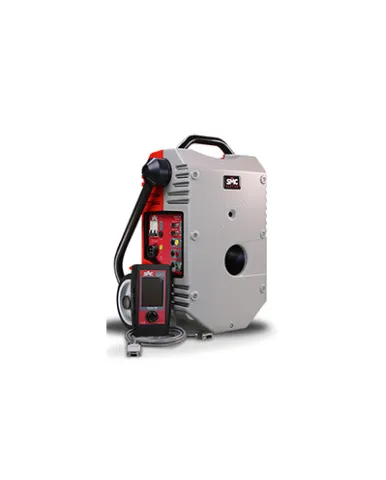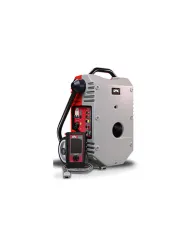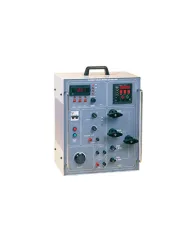Product

Primary Injection Test System - SMC Raptor
Category :
Primary Injection Test
Primary Injection Test
Price :
Rp.123
More From Primary Injection Test
Primary Injection Test System - SMC Raptor
For high current applications, the Raptor implements the ‘pass-through secondary’ technique, with a centered hole that confers to this product a unique personality. You only need to drive the current conductor through the Raptor and attach both ends to the device under test. Multiple cables can be used in parallel to increase the effective cross section, and the compliance voltage can be easily multiplied by just doing multiple turns around the unit. If additional power is required,5-kVA slave units can be added for up to a total 18 kVA and a maximum 15,000 A injection. These units communicate with the master Raptor via an infrared link, so no physical interconnections are required. An integrated software calculator allows determining the equipment and cabling required to attain a specific amount of current easily.
Rp.123
See DetailsPrimary Injection Test System - SMC Raptor HV
The Raptor HV connects to the master unit via the Expansion Port, from where it also takes the necessary power. You can think of the Raptor HV as a pluggable high voltage peripheral that takes advantage of all the valuable features in the Raptor Master including the electronically controlled switching amplifier, DSP based intelligence and a robust communication and device synchronization system. Naturally the HV’s control is fully integrated in the master’s console. The voltage signal generated by the master at the expansion port is raised by the HV up to two user selectable ranges, 1kV and 2kV, and the output is measured in current, voltage and phase angle to provide adequate injection control and application’s feedback.
Rp.123
See DetailsPrimary Injection Test System - SMC LET400 RDC
AC Current Test Set up to 2.5 kA with Auxiliary DC Source. The LET-400-RDC is designed to perform most of the primary tests that are necessary in substations commissioning. It allows to perform with sufficient power, all the primary current injections to test the proper function and wiring of all the elements that compose the protection and measuring section in a substation. The LET range addresses test applications that require high levels of AC or DC current, typically primary current injection. The generation power of the various models ranges from 1,000 to 8,000 VA or Watt. The output voltage is adjusted by means of a variac at the primary winding of the output transformer. The injected current is measured and displayed by a built-in digital ammeter. Some LET versions feature a motorized variac for applications that require a greater separation between the power output and the control & regulation panel.
Rp.123
See Details



